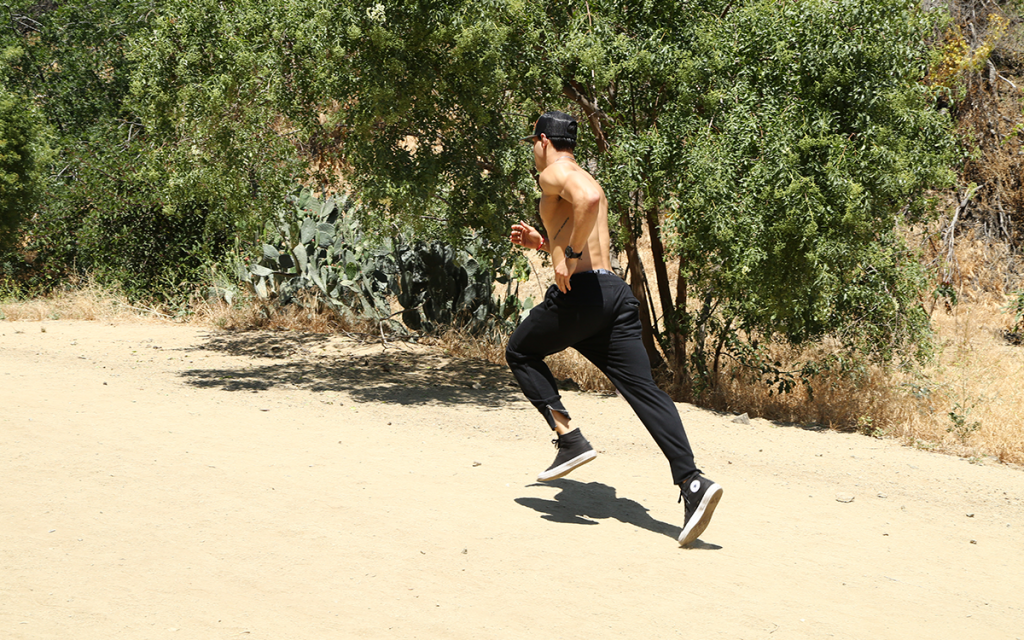If your training goal is to lose weight, which is common in the gym, then you need to add cardio into your routine. However, the number of different ways to do cardio can be more than the number of bicep variations a frat guy does before hitting the club.
Generally, we can break down cardio into two main types: high-intensity interval training (HIIT) and low-intensity steady state (LISS). One is not necessarily better or worse than the other, however, they are different and each has its own set of pros and cons.

Pros of LISS Training
LISS is low impact, which means it creates relatively low stress on the body. Examples of LISS training include long runs, swimming laps or dance-based fitness like Zumba. LISS is a good choice for people who already deal with high physical stress, are injured, or simply cannot handle advanced amounts of physical exertion.
Because it’s low impact, you can do it virtually every day with minimal impact on other types of training. It would take a lot of walking in order to affect your squats the next day. However, if you’re doing high-impact cardio like running up stairs or long jumping, that might take away from how much weight you can load the next time.
For a long time LISS was actually believed to be the only way to burn fat because it keeps energy pathways open for longer, leaving more opportunities to burn fat.
If you enjoy engaging in low-impact cardio for longer periods of time, then LISS is great to incorporate into your training regimen.
Cons of LISS Training
The biggest negative of LISS is that in order to burn any meaningful amount of calories, you have to do it for a long time, in some cases over an hour. So if you are a busy person with a tight schedule, LISS might not be the best form of cardio for you.
Furthermore, you might have a good time getting sweaty in your Barre class the first few times you do it, but often times as you continue taking the same class over and over, it can begin to feel more and more like a chore, and you lose whatever enjoyment you originally had in the class in the first place.

Pros of HIIT
So if LISS isn’t for you, what are your alternatives? Well, lucky for you there is HIIT. HIIT means training in intervals at a high intensity. Intervals in this case refer to a work/rest ratio.
For example, sprinting for three seconds, and then resting for 30 seconds. What does high intensity mean? Sprints, jumping, or (heaven forbid) burpees, or any activity that requires you to go all out and cannot be sustained for long periods at a time.
You can customize what your HIIT training looks like based on preference and ability. HIIT training can be done at any form of cardio. For example, if you hate running, but you like swimming, you can do HIIT swimming.
You can also change the interval to whatever ratio you can realistically perform. If you haven’t worked out in a while, you may want to start with something like 10 seconds of work and 30 seconds of rest. And if you are in shape and have a high aerobic capacity, switching those numbers around, 30 seconds of wrk for 10 seconds of rest, makes more sense.
Unlike LISS which can take you over an hour to complete, you can perform a HIIT session in as little as five to 20 minutes. So if you are a busy person, but fitness is still a top priority for you, HIIT makes more sense.
HIIT training also creates a much higher EPOC, i.e. excess post-exercise oxygen consumption, which is the oxygen your body needs to recover after a hard bout of training. More oxygen consumption means more calories burned and more fat lost.
Cons of HIIT
The major drawback of high-intensity training is that it is more strenuous on the body. For this reason, you cannot HIIT train as frequently as you can LISS train.
I don’t recommend exceeding three HITT sessions a week, whereas with LISS, you can do it pretty much every day. You are also more likely to develop joint pain with HIIT training, and unsurprisingly, HIIT training is more likely to lead to a serious injury.
Furthermore, HIIT training requires more mental fortitude to truly be effective. Meaning, you really need to push yourself to your limit, which for some can be easy, but for others might offer more of a challenge.
Similar to how if you take a Zumba class for two months and then drop off, a similar experience can happen with HIIT training.
You may enjoy HIIT training at first, but it too can get repetitive and boring. For this reason, it might be a good idea to either switch up the HIIT exercise, going from running to swimming ,for example, or change up ratios, going from 10 seconds on 10 seconds off, to 20 seconds on 10 seconds off.


